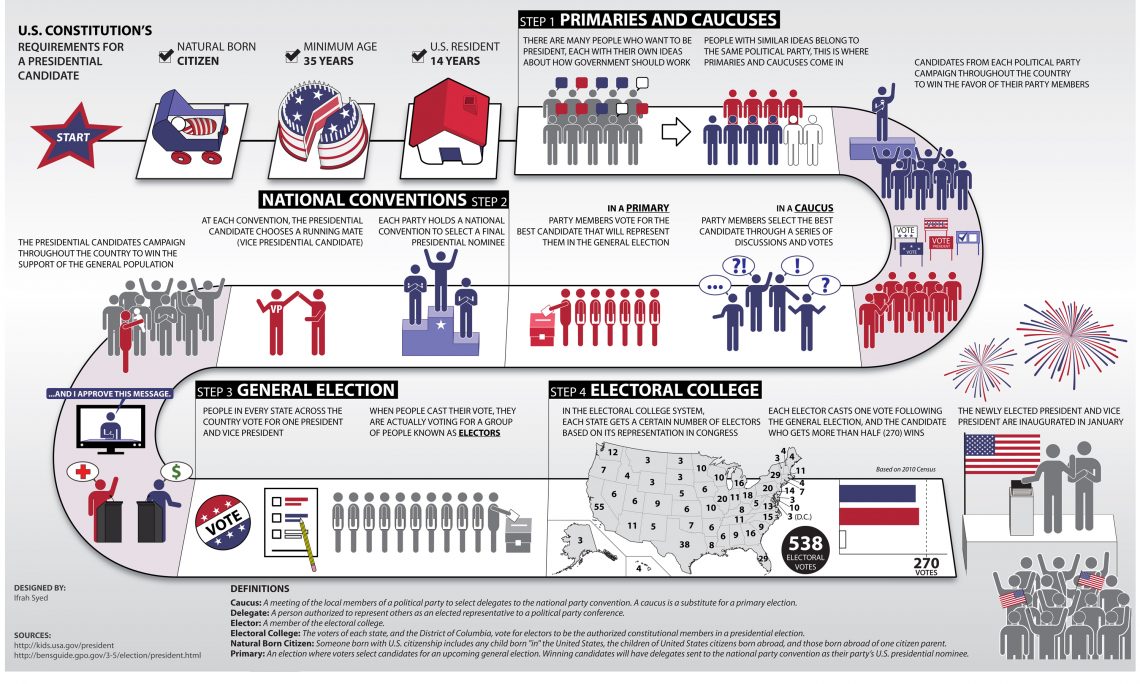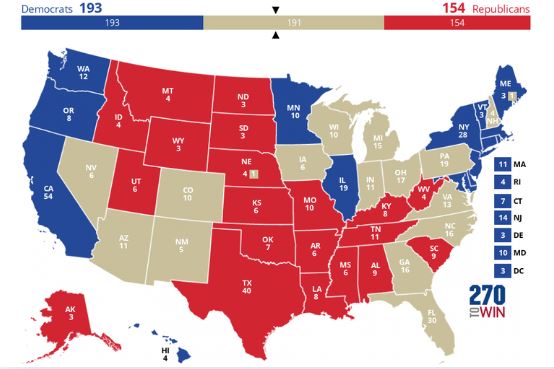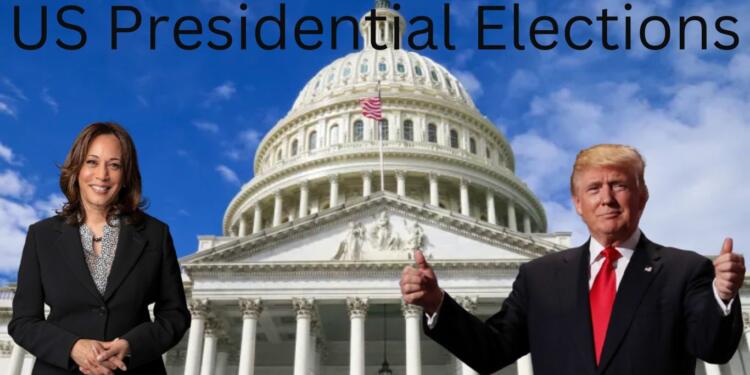Within two and half months from now, the United States of America will get its new President as the stage is set for an electoral battle between Vice President Kamala Harris and former President Donald Trump. With both sides pushing in efforts to emerge victorious, the polls in the United States are an interesting exercise. The electoral process and the associated nitty-gritties are crucial to understand the elections and anticipate their possible outcomes.
To elect the future President of the United States, it takes two years from the initial campaign to inauguration. The first step is the announcement of the candidacy by those looking to run for office.
Campaign Launch by Candidates
This typically happens a year or more before the elections. During this time, the candidates travel across the country, talking about their policies and vision and garnering support.
Primaries and Caucuses
After this, the step of Primaries and Caucuses comes in. This step usually happens between January and June of the election year. These are intra-party polls to elect the most preferred candidate.
Primaries: Primaries are the regular elections where people cast private ballots to elect preferred candidates.
Caucuses: In these polls, the party members discuss and vote in groups.
The events mainly aim to narrow down potential candidates within the party. This helps in eliminating confusion at the initial level and paves the way for clear single candidacy by both the parties – Democrats and Republicans.
Delegates and National Convention
After these events comes another step of delegates and the National Convention. The National Convention of the parties is broadly an event where the final candidate of the party is elected based on delegates’ votes.
It must be noted here that delegates are party representatives whom the candidates win during the primaries and caucuses in every state. This point of the presidential election is also significant, as at the National Convention, the elected nominee announces the name of their running mate as VP.
Head-on Election Campaign
From September to November is the stage of the election campaign. During this period, the nominee along with their running mate goes to the public with their policies, visions, and stands on issues related to them.
Election Day and Popular Vote
The first Tuesday in November is Election Day in the United States. At this point, one needs to understand that U.S. elections are indirect elections and the voters do not elect the President of the United States directly. Instead, they elect a group of representatives called electors who pledge to support their candidate. This election is called the popular vote, and the electors make up the Electoral College, which finally elects the President.

Electoral College
In the Electoral College, the number of electors from each state depends upon its population, with a total of 538 electors in the country. For example, California, the most populous state, has 55 electoral votes, while smaller states like Wyoming have only 3. 270 votes are needed to win the presidential election.
How are electoral votes allocated?
Winner-Takes-All System: In 48 states, the Presidential candidate who wins the popular vote, is awarded all the electoral votes of that state. However, states like Maine and Nebraska are exceptions as they use a proportional system. They award electoral votes based on results in individual congressional districts.
Catch in the Game
It has often been seen in U.S. presidential elections that a candidate loses the polls even after getting the popular vote, and vice versa. Most recently, it happened in 2016 when Donald Trump failed to get the majority popular vote but won the election. This happens when the winning candidate clinches many small-state electoral votes against one large state.
Donald Trump won Michigan and Wisconsin with 16 and 10 electoral votes respectively in 2016, which helped him to win the election despite losing California with 55 electoral votes.
Swing States
Since the 2000 United States presidential election, the terms “red state” and “blue state” have been used to describe states where voters predominantly support one political party—Republicans in red states and Democrats in blue states—in presidential and other statewide elections. In contrast, states where the vote shifts between Democratic and Republican candidates are known as “swing states” or “purple states.” These swing states, which can vote either way, play a crucial role in U.S. elections. Hence, candidates make extensive efforts to win these states to turn the election in their favor. These states include Florida, Pennsylvania, Wisconsin, Michigan, Ohio, and Arizona.

Congress Counts Votes
The U.S. Congress meets in early January and counts the electors’ votes, upon which the one who crosses the 270 mark is declared president-elect.
Inauguration
The final stage is where the president-elect takes oath and assumes the office of the President of the United States, beginning their four-year term in office.





























